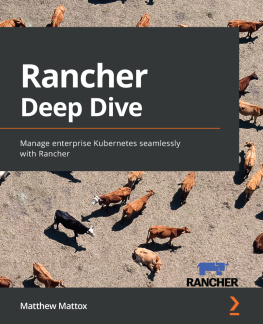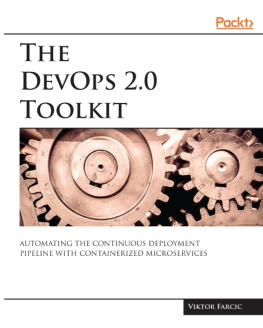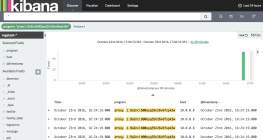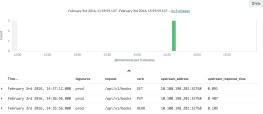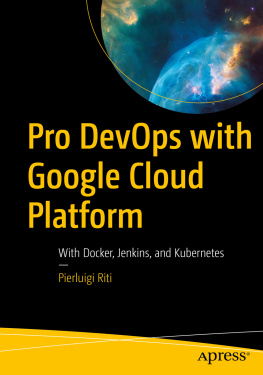Victor Farcic - The DevOps 2.4 Toolkit: Continuous Deployment to Kubernetes - Continuously deploying applications with Jenkins to a Kubernetes cluster
Here you can read online Victor Farcic - The DevOps 2.4 Toolkit: Continuous Deployment to Kubernetes - Continuously deploying applications with Jenkins to a Kubernetes cluster full text of the book (entire story) in english for free. Download pdf and epub, get meaning, cover and reviews about this ebook. year: 2017, publisher: Packt Publishing, genre: Home and family. Description of the work, (preface) as well as reviews are available. Best literature library LitArk.com created for fans of good reading and offers a wide selection of genres:
Romance novel
Science fiction
Adventure
Detective
Science
History
Home and family
Prose
Art
Politics
Computer
Non-fiction
Religion
Business
Children
Humor
Choose a favorite category and find really read worthwhile books. Enjoy immersion in the world of imagination, feel the emotions of the characters or learn something new for yourself, make an fascinating discovery.

- Book:The DevOps 2.4 Toolkit: Continuous Deployment to Kubernetes - Continuously deploying applications with Jenkins to a Kubernetes cluster
- Author:
- Publisher:Packt Publishing
- Genre:
- Year:2017
- Rating:5 / 5
- Favourites:Add to favourites
- Your mark:
- 100
- 1
- 2
- 3
- 4
- 5
The DevOps 2.4 Toolkit: Continuous Deployment to Kubernetes - Continuously deploying applications with Jenkins to a Kubernetes cluster: summary, description and annotation
We offer to read an annotation, description, summary or preface (depends on what the author of the book "The DevOps 2.4 Toolkit: Continuous Deployment to Kubernetes - Continuously deploying applications with Jenkins to a Kubernetes cluster" wrote himself). If you haven't found the necessary information about the book — write in the comments, we will try to find it.
Victor Farcic: author's other books
Who wrote The DevOps 2.4 Toolkit: Continuous Deployment to Kubernetes - Continuously deploying applications with Jenkins to a Kubernetes cluster? Find out the surname, the name of the author of the book and a list of all author's works by series.
The DevOps 2.4 Toolkit: Continuous Deployment to Kubernetes - Continuously deploying applications with Jenkins to a Kubernetes cluster — read online for free the complete book (whole text) full work
Below is the text of the book, divided by pages. System saving the place of the last page read, allows you to conveniently read the book "The DevOps 2.4 Toolkit: Continuous Deployment to Kubernetes - Continuously deploying applications with Jenkins to a Kubernetes cluster" online for free, without having to search again every time where you left off. Put a bookmark, and you can go to the page where you finished reading at any time.
Font size:
Interval:
Bookmark:
This book is for sale at http://leanpub.com/the-devops-2-4-toolkit
This version was published on 2018-08-17

* * * * *
This is a Leanpub book. Leanpub empowers authors and publishers with the Lean Publishing process. Lean Publishing is the act of publishing an in-progress ebook using lightweight tools and many iterations to get reader feedback, pivot until you have the right book and build traction once you do.
* * * * *
Soon after I started working on The DevOps 2.3 Toolkit: Kubernetes, I realized that a single book could only scratch the surface. Kubernetes is vast, and no single book can envelop even all the core components. If we add community projects, the scope becomes even more extensive. Then we need to include hosting vendors and different ways to set up and manage Kubernetes. That would inevitably lead us to third-party solutions like OpenShift, Rancher, and DockerEE, to name a few. It doesnt end there. Wed need to explore other types of community and third-party additions like those related to networking and storage. And dont forget the processes like, for example, continuous delivery and deployment. All those things could not be explored in a single book so The DevOps 2.3 Toolkit: Kubernetes ended up being an introduction to Kubernetes. It can serve as the base for exploring everything else.
The moment I published the last chapter of The DevOps 2.3 Toolkit: Kubernetes, I started working on the next material. A lot of ideas and tryouts came out of it. It took me a while until the subject and the form of the forthcoming book materialized. After a lot of consultation with the readers of the previous book, the decision was made to explore continuous delivery and deployment processes in a Kubernetes cluster. The high-level scope of the book you are reading right now was born.
Just like the other books I wrote, this one does not have a fixed scope. I did not start with an index. I didnt write a summary of each chapter in an attempt to define the scope. I do not do such things. There is only a high-level goal to explore continuous delivery and deployment inside Kubernetes clusters. What I did do, though, was to set a few guidelines.
The first guideline is that all the examples will be tested on all major Kubernetes platforms. Well, that might be a bit far-fetched. Im aware that any sentence that mentions all together with Kubernetes is bound to be incorrect. New platforms are popping out like mushrooms after rain. Still, what I can certainly do is to choose a few of the most commonly used ones.
Minikube and Docker for Mac or Windows should undoubtedly be there for those who prefer to play with Docker locally.
AWS is the biggest hosting provider so Kubernetes Operations (kops) must be included as well.
Since it would be silly to cover only un-managed cloud, I had to include managed Kubernetes clusters as well. Google Kubernetes Engine (GKE) is the obvious choice. It is the most stable and features rich managed Kubernetes solution. Adding GKE to the mix means that Azure Container Service (AKS) and Amazons Elastic Container Service (EKS) should be included as well so that we can have the big trio of the hosting vendors that offer managed Kubernetes. Unfortunately, even though AKS is available, it is, at this moment (June 2018), still too unstable and its missing a lot of features. So, Im forced to scale down from the trio to the GKE and EKS duo as representatives of managed Kubernetes well explore.
Finally, a possible on-prem solution should be included as well. Since OpenShift shines in that area, the choice was relatively easy.
All in all, I decided to test everything in minikube and Docker for Mac locally, AWS with kops as the representative of a cluster in the cloud, GKE for managed Kubernetes clusters, and OpenShift (with minishift) as a potential on-prem solution. That, in itself, already constitutes a real challenge that might prove to be more than I can chew. Still, making sure that all the examples work with all those platforms and solutions should provide some useful insights.
Some of you already chose the Kubernetes flavor youll use. Others might still wonder whether to adopt one or the other. Even though the comparison of different Kubernetes platforms is not the primary scope of the book, Ill do my best to explain the differences as they come.
To summarize the guidelines, it explores continuous delivery and deployment in Kubernetes using Jenkins. All the examples will be tested in minikube, Docker for Mac (or Windows), AWS with kops, GKE, OpenShift with minishift, and EKS.
The moment I finished writing the previous paragraph I realized that I am repeating the same mistakes from the past. I start with something that looks like a reasonable scope, and I end up with something much bigger and longer. Will I be able to follow all of those guidelines? I honestly dont know. Ill do my best.
I was supposed to follow the best practice by writing the overview at the end. Im not doing that. Instead, you are reading about the plans for the book, not the end result. This is not an overview. You can consider this as the first page of the diary. The end of the story is still unknown.
Eventually, you might get stuck and will be in need of help. Or you might want to write a review or comment on the books content. Please join the DevOps20 Slack channel and post your thoughts, ask questions, or participate in a discussion. If you prefer a more one-on-one communication, you can use Slack to send me a private message or send an email to viktor@farcic.com. All the books I wrote are very dear to me, and I want you to have a good experience reading them. Part of that experience is the option to reach out to me. Dont be shy.
Please note that this one, just as the previous books, is self-published. I believe that having no intermediaries between the writer and the reader is the best way to go. It allows me to write faster, update the book more frequently, and have more direct communication with you. Your feedback is part of the process. No matter whether you purchased the book while only a few or all chapters were written, the idea is that it will never be truly finished. As time passes, it will require updates so that it is aligned with the change in technology or processes. When possible, I will try to keep it up to date and release updates whenever that makes sense. Eventually, things might change so much that updates are not a good option anymore, and that will be a sign that a whole new book is required. I will keep writing as long as I continue getting your support.
This book explores continuous deployment to a Kubernetes cluster. It uses a wide range of Kubernetes platforms and provides instructions how to develop a pipeline on few of the most commonly used CI/CD tools.
This book is not your first contact with Kubernetes. I am assuming that you are already proficient with Deployments, ReplicaSets, Pods, Ingress, Services, PersistentVolumes, PersistentVolumeClaims, Namespaces and a few other things. This book assumes that we do not need to go through the basic stuff. At least, not through all of it. The book assumes a certain level of Kubernetes knowledge and hands-on experience. If thats not the case, what follows might be too confusing and advanced. Please read The DevOps 2.3 Toolkit: Kubernetes first, or consult the Kubernetes documentation. Come back once youre done and once you think you can claim that you understand at least basic Kubernetes concepts and resource types.
Font size:
Interval:
Bookmark:
Similar books «The DevOps 2.4 Toolkit: Continuous Deployment to Kubernetes - Continuously deploying applications with Jenkins to a Kubernetes cluster»
Look at similar books to The DevOps 2.4 Toolkit: Continuous Deployment to Kubernetes - Continuously deploying applications with Jenkins to a Kubernetes cluster. We have selected literature similar in name and meaning in the hope of providing readers with more options to find new, interesting, not yet read works.
Discussion, reviews of the book The DevOps 2.4 Toolkit: Continuous Deployment to Kubernetes - Continuously deploying applications with Jenkins to a Kubernetes cluster and just readers' own opinions. Leave your comments, write what you think about the work, its meaning or the main characters. Specify what exactly you liked and what you didn't like, and why you think so.

